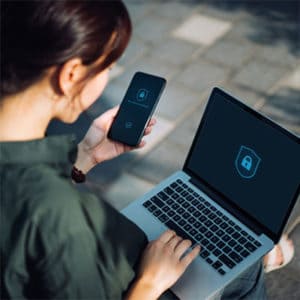Identity theft affects millions of people each year and can cause serious harm. Protect yourself by securing your personal information, understanding the threat of identity theft, and exercising caution.
Here are 10 things you can start doing now to protect yourself and your loved ones from identity theft:
- Protect your Social Security number by keeping your Social Security card in a safe place at home. Don’t carry it with you or provide your number unnecessarily.
- Be careful when you speak with unknown callers. Scammers may mislead you by using legitimate phone numbers or the real names of officials. If they threaten you or make you feel uneasy, hang up.
- Create strong, unique passwords so others can’t easily access your accounts. Use different passwords for different accounts so if a hacker compromises one account, they can’t access other accounts. Check out the Federal Trade Commission’s password checklist for tips.
- Never give your personal or financial information in response to an unsolicited call or message, and never post it on social media.
- Shred paper documents that contain personal information, like your name, birth date, and Social Security number.
- Protect your mobile device from unauthorized access by securing it with a PIN, adding a fingerprinting feature, or using facial recognition. You can also add a password and adjust the time before your screen automatically locks.
- Regularly check your financial accounts for suspicious transactions. You can also request and check a free credit report from each of the three credit bureaus every year: TransUnion, Equifax, and Experian.
- Avoid internet threats by installing and maintaining strong anti-virus software on all your devices—including your mobile device and personal computer. Use a virtual private network (VPN) to stay safe on public Wi-Fi. Do not perform certain activities that involve sensitive data, like online shopping and banking, on public Wi-Fi networks.
- Protect yourself on social media by customizing your security settings and deleting accounts you no longer use. Also, double-check suspicious messages from your contacts, as hackers may create fake accounts of people you know.
- Never click on any link sent via unsolicited email or text message—type in the web address yourself. Only provide information on secure websites.
We encourage you to create your own personal my Social Security account to track your earnings record. For more information, please read our publication, Protecting Personal Information. Contact us if you see suspicious work activity on your record–you could be a victim of identity theft.


.png)